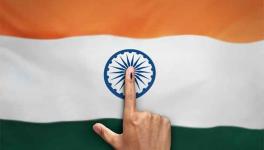Politics over Power Supply in Punjab as Farmers and Opposition Parties Mount Pressure on Govt

Image Courtesy: Tribune India
The Punjab government has restricted power supply to largescale industries till July 10 following an ultimatum issued by the farmers that if electricity supply is not improved by July 5, they would gherao Chief Minister Capt Amarinder Singh’s residence Moti Mahal in Patiala. The latest decision has been taken by the government in the view of snags developed in the two units of Talwandi Sabo plants and the infuriated farmers who were up in arms against the Congress-led state government.
The Punjab State Corporation Limited (PSPCL) has also issued a penalty notice to the Talwandi Sabo thermal plant (TSPL) for “not ensuring timely availability of unit no.3”. Talwandi Sabo, one of the state’s largest thermal plants, generates 1980 MW power from its three units of 680 MW. Meanwhile, th Samyukta Kisan Morcha (SKM) postponed the program to gherao the Moti Mahal on July 6.
“Due to improvement in power supply for AP consumers, we have postponed the program of gherao of Moti Mahal on July 6,” the Morcha said.
On July 5, farmers in Patiala demonstrated outside the Punjab State Power Corporation Limited (PSPCL) to protest against the state's power outages. Farmers stated that their paddy crop was being harmed as a result of the irregular electricity supply. The farmers also demanded 24 hour power supply for residential areas.
Speaking to Newsclick, Baldev Zira, Bharatiya Kisan Union (Krantikari), said, "We need power to run the motor and handpump. We can't water our fields since we don't have electricity. We used to operate generators on diesel, but with the rise in fuel prices, the framers can no longer afford it.”
Meanwhile, PSPCL has promised farmers that they will get 10.5 hours of continuous power for paddy production. In addition, the CM Amarinder Singh stated that “the demand for power has reached record 16000 MW” against a supply of 13500 MW.
“PSPCL started purchasing 7400 MW of power from outside the state,” he disclosed, adding that this was 1000 MW more than what was purchased last year.
POLITICS OVER POWER
In the middle of the power crisis and ahead of the Assembly elections, the politics surrounding power is rife in Punjab. On June 30, Delhi CM Arvind Kejriwal promised 300 units of free electricity to all domestic consumers in Punjab. Taking a swipe at the Congress-led government in the state, Kejriwal said, “This is Kejriwal’s guarantee, and not Captain’s (Amarinder Singh) promises. Soon after AAP forms the government, the announcement about 300 units and bill waiver will be implemented immediately. But ensuring 24-hour supply will take 2-3 years,” he said.
In addition to the free 200 units of power to Schedule Castes (SC), Below Poverty Line (BPL), and Backward Castes (BC) households and freedom fighters in the state, Punjab provides free power to agriculture and subsidised power to industries.
Kejriwal’s statement was followed by AAP state president and Lok Sabha member Bhagwant Mann ‘s claim that if AAP formed the government, they would cancel the power agreements with the private companies.
There has been a lot of hue and cry in Punjab over Power Purchase Agreements (PPAs), which were signed between the government and private plants. These agreements were signed during SAD-BJP regime which was, back then, heavily criticised by the Congress for benefitting the private companies. Scrapping of PPAs was one of the poll promise of the Congress government and now, it has come under attack by the opposition and its own disgruntled party member Navjot Singh Sindhu.
Under these PPAs, the state has to pay fixed charges to three plants including Rajpura Thermal Power Plant, Talwandi Sabo Power Project and Goindwal Sahib Power Plant even when the state is not purchasing power from them.
The overall subsidy payable for the financial year 2021-22 is Rs 17,796 crore. The subsidy will be paid in 12 instalments this year. “The first two instalments are Rs 1,386 crore each, while the balance Rs 15,024 crore will be paid in 10 equal instalments between June 2021 and February 2022,” reads the Punjab State Electricity Regulatory Committee (PSERC) order.
The Punjab government is also under the burden of dues, which it has not been able to pay and which experts believe will eventually be extracted from the consumers.
Recently, CM Singh said that the “Badal’s PPAs was under review and a legal strategy would come soon to counter them”.
Meanwhile, a disgruntled Navjot Singh Sidhu who came into the limelight after dissenting against his own party has been mounting pressure to “annul” the power purchase agreements.
“Hollow promises of free power have No meaning until PPAs are annulled through a New Legislation in Punjab Vidhan Sabha…300 units of free power is merely a fantasy, until the faulty clauses in the PPAs are keeping Punjab bonded,” said Sidhu in a tweet. The tweet came at a time when CM Singh has reached Delhi to meet Congress president Sonia Gandhi.
The Akali Dal has not been silent on the power crisis and has urged the Congress government to provide “affordable round the clock power to Punjab as was done by SAD government.”
All political parties are trying to capitalise on the power crisis, explains Political Science Professor Harjeshwar Singh. “While political parties are blaming each other over the power crisis, it is the consumer who is bearing the brunt of both electricity outage and high power rates. For cultivation of paddy, electricity is very important for farmers to irrigate their fields. The mercury in Punjab also touches 45 degrees, so people do require ACs,” he said.
Commenting on the PPAs, Singh said, “There is a lot of anger against PPAs in Punjab because costly power reaches the consumer. And to pay such high power rate during teh pandemic has angered consumers.”
Get the latest reports & analysis with people's perspective on Protests, movements & deep analytical videos, discussions of the current affairs in your Telegram app. Subscribe to NewsClick's Telegram channel & get Real-Time updates on stories, as they get published on our website.
























